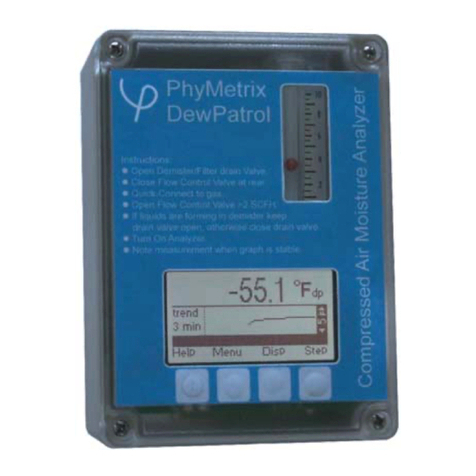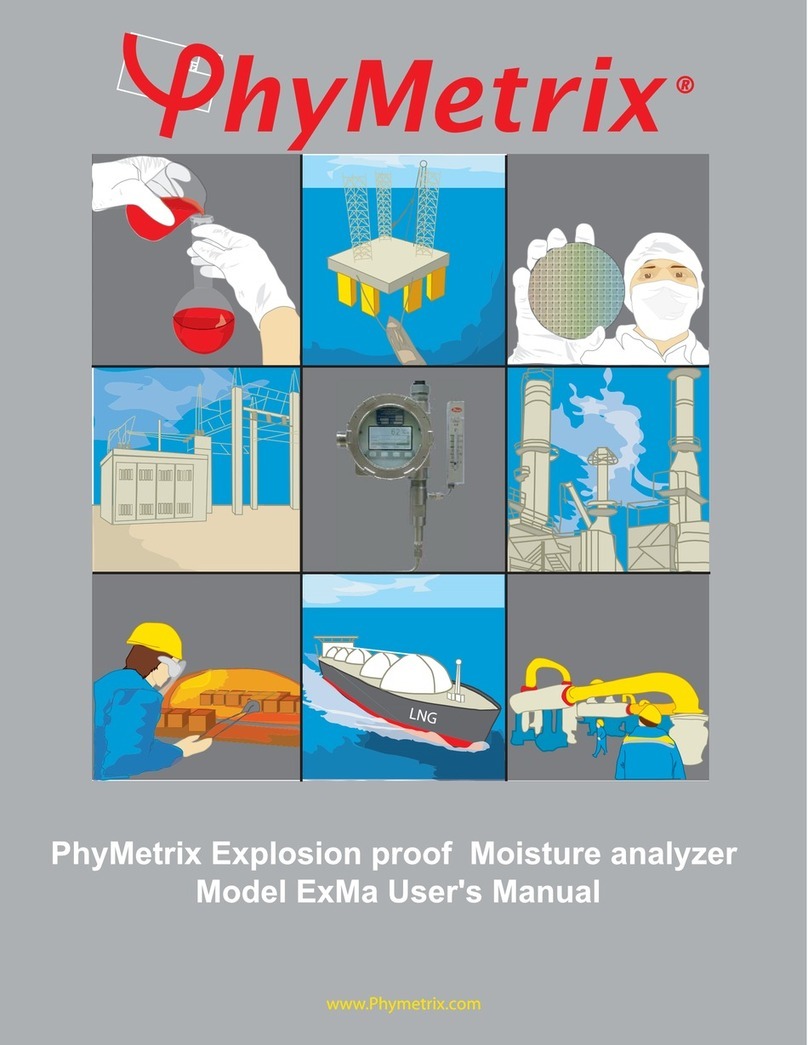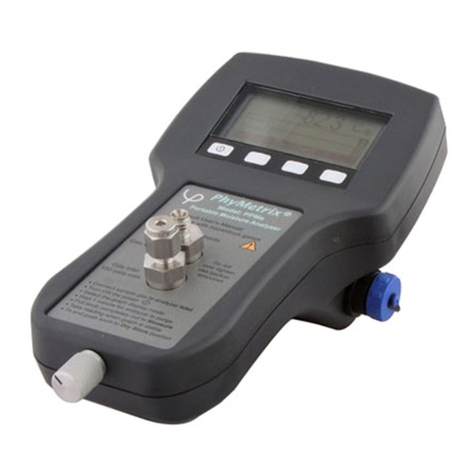
4Moisture System Considerations
This section is offered as background information. There are several considerations in keeping
your system at a stable and pure moisture level, free of contamination from ambient air moisture:
The integrity of the materials isolating the pure gas from the external air, including leaks
from poorly secured fittings.
The back diffusion of moisture through the exhaust outlet, the exhausts of both the
analyzer and the user system under measurement should be considered.
The effects of temperature on the equilibrium of moisture and the surrounding materials,
often observed as diurnal cycles in the measurement.
4.1 Integrity of the Materials of the User’s System
Before considering the materials of a system where a specified dewpoint level must be
maintained, one should review two concepts.
Compared to the structure of solids the water molecule is much smaller. This is true
compared to even the crystalline structure of metals but especially important in the
polymer structure of plastics.
Water vapor pressure in gasses obeys Dalton’s law of partial pressures, which states that
the overall pressure of a gas is the sum of its constituent gases. And each gas seeks to
equilibrate its pressure across gradients of only its own gas pressure.
Let’s consider air in a pipe at a total pressure of 100 psia, which has been dried down to -40°C
dewpoint. The partial water vapor pressure in the pipe is 0.13mB. If the ambient temperature is
22°C with relative humidity of 30%, then the partial water vapor pressure in the surrounding
atmosphere is 7.9mB or approximately 60 times greater than the partial water vapor pressure in
the pipe. Thus even though the total pressure in the pipe is much greater that the pressure outside,
the reverse is true for the water vapor pressure, and as we discussed earlier the water vapor seeks
to equilibrate its pressure thus it “wants” to flow from the outside to the inside and will do so
through the cracks in the joints (such as poorly tightened fittings, or NPT threads even if they are
properly taped), as well as through the walls of pipes tubes and other vessels. The integrity of the
system is extremely important in maintaining a stable low dewpoint; for dewpoints below -60°C
always use stainless steel or PTFE, while for higher dewpoints you can use copper or galvanized
steel; but never use rubber, Tygon, Nylon or other plastic tubing. Pressure regulators often use
rubber diaphragms, check and if necessary replace with a stainless steel diaphragm regulator.
Filter bowls should be stainless steel or glass, plastic bowls should be avoided. If a flow meter is
placed at the inlet of the analyzer it should have a glass tube and be rated for the expected
pressure levels, however in general it is best to place flow meters at the analyzer exhaust.
Another material consideration relates to materials sealed in the system such as paper filters;
these may not contribute to leaks but will greatly slow down the measurement because they will
adsorb and desorb water molecules as the system dewpoint is changing.
4.2 Moisture Back Diffusion (backflow) Along the Walls of the Exhaust Tubing
The linear velocity of gas flowing in a tube is close to zero immediately along the wall of the
tube. This coupled with the previously discussed “need” for the moisture to flow from the higher
water vapor pressure to the lower one, allows for water molecules to flow against the flow
through the exhaust outlet into the sampling chamber of the analyzer. The fact that water
4































